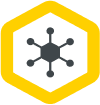Bien Aca
Covid19 Open Source initiative

Keeping track of people under mandatory quarantine is a complex task. There are just not enough resources to certify that every individual is compliant and a single non-conforming individual can spread the virus in a way that can spiral out of control. Take Korea’s patient 31 as an example, a super spreader that caused a successful, globally appraised, strategy to fail.
The intuitive approach is to keep track of an individual´s location and automatically launch an alert to the control team. This is Korea’s approach and has been successful. They legally prohibit people from leaving their homes, they track their cellphones and a case officer checks on them twice a day.
But it might be a little more difficult to implement when individuals are actively trying to escape the quarantine and trying to devise ways to trick the system, something we foresee in less compliant cultures. A drug addict (or any individual with a high enough motivation to leave his or her home ) would wait for the officer to call him and then leave the house without the phone and get his fix.
Another big issue is that every government is developing their own, quite similar solution, and no other collaborative efforts have been established (as far as we aware of), everyone is starting from scratch.
This is why we designed BienAcá, an open source solution that enables any country or organization to create their own solution out of this codebase. BienAcá also includes strategies to actively discourage non-compliance, requiring little to no extra effort from the control mechanisms.
Using the fingerprint scanner we introduce biometric checks to the standard solution to ensure that the actual individual, and nobody else, is using the device. In addition, we introduce randomness to prevent the user from figuring out and playing the system.
How does it work?

Check out the repository:
https://github.com/ingenious-agency/bien-aca-mobile

Bien Aca
Covid19 Open Source initiative
Keeping track of people under mandatory quarantine is a complex task. There are just not enough resources to certify that every individual is compliant and a single non-conforming individual can spread the virus in a way that can spiral out of control. Take Korea’s patient 31 as an example, a super spreader that caused a successful, globally appraised, strategy to fail.
The intuitive approach is to keep track of an individual´s location and automatically launch an alert to the control team. This is Korea’s approach and has been successful. They legally prohibit people from leaving their homes, they track their cellphones and a case officer checks on them twice a day.
But it might be a little more difficult to implement when individuals are actively trying to escape the quarantine and trying to devise ways to trick the system, something we foresee in less compliant cultures. A drug addict (or any individual with a high enough motivation to leave his or her home ) would wait for the officer to call him and then leave the house without the phone and get his fix.
Another big issue is that every government is developing their own, quite similar solution, and no other collaborative efforts have been established (as far as we aware of), everyone is starting from scratch.
This is why we designed BienAcá, an open source solution that enables any country or organization to create their own solution out of this codebase. BienAcá also includes strategies to actively discourage non-compliance, requiring little to no extra effort from the control mechanisms.
Using the fingerprint scanner we introduce biometric checks to the standard solution to ensure that the actual individual, and nobody else, is using the device. In addition, we introduce randomness to prevent the user from figuring out and playing the system.
How does it work?
1. An app is installed in the individual’s cell phone. This app sends location information to a central system.
2. If there is no contact with the device (the device loses connectivity, is turned off, etc.) or the device leaves the designated area a pre-alert is sent to the person asking them to solve the issue.
3. If the cause of the pre-alert is not solved (return to area, connect to internet, etc.), the system notifies the control center for them to deal with the incident by calling the person or whatever action they see fit.
4. Several times a day, the app randomly requires the user to identify him- or herself using the fingerprint scanner. If the user fails to do so, an alert is sent to the control center.
 Schedule a call
Schedule a call